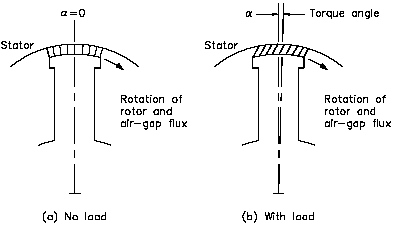gar
Senior Member
- Location
- Ann Arbor, Michigan
- Occupation
- EE
090305-1314 EST
Rick:
Conservation of energy is the controlling factor. You can not treat the synchronous motor with ohm's law and view the motor as an invariant resistor.
I have no problem creating a load that is constant torque at a constant speed. Given that my load is a constant torque and that a synchronous motor runs at a synchronous speed defined by the supply frequency, then as I lower the input voltage the component of current that is in phase with the excitation voltage must go up to maintain the same power input as is being consumed on the output.
This is also true of an induction motor but harder to describe an example to prove the point.
Here is another example with a different product. Consider a switching power supply with automatic regulation of voltage accomplished with the switching control providing 5 V at 20 A. That is 100 W output. Assuming no losses the input is 0.833 A at 120 V. At 240 V input the current is 0.417 A. This is an easy experiment to perform. Find one of the new supplies that is rated from 95 to 250 V input and anything between. Put a fixed load on the supply. Use a Variac to adjust the input voltage from 95 to 240 V and monitor the input current.
.
Rick:
Conservation of energy is the controlling factor. You can not treat the synchronous motor with ohm's law and view the motor as an invariant resistor.
I have no problem creating a load that is constant torque at a constant speed. Given that my load is a constant torque and that a synchronous motor runs at a synchronous speed defined by the supply frequency, then as I lower the input voltage the component of current that is in phase with the excitation voltage must go up to maintain the same power input as is being consumed on the output.
This is also true of an induction motor but harder to describe an example to prove the point.
Here is another example with a different product. Consider a switching power supply with automatic regulation of voltage accomplished with the switching control providing 5 V at 20 A. That is 100 W output. Assuming no losses the input is 0.833 A at 120 V. At 240 V input the current is 0.417 A. This is an easy experiment to perform. Find one of the new supplies that is rated from 95 to 250 V input and anything between. Put a fixed load on the supply. Use a Variac to adjust the input voltage from 95 to 240 V and monitor the input current.
.

